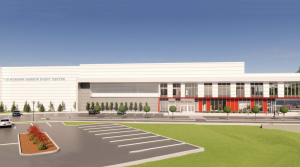Amazon abandons plans for a New York Headquarters Two
February 22, 2019
Amazon announced plans to abandon their plan for a Long Island City headquarters on Thursday, February 14. The e-commerce giant also said that it did not intend to reopen its search for a second headquarters at this time but would continue with their plans to put at least 25,000 jobs in Arlington County in Northern Virginia and 5,000 in Nashville with expansions. The company will also continue to grow the teams it already has in Staten Island, Brooklyn and Manhattan.
Amazon’s decision on a new headquarters location has been highly anticipated news since they announced the plans back in September 2017. A new headquarters meant thousands of new jobs, which cities and states believed would boost the economy in certain areas.
The company chose the Long Island City location because the state offered major tax breaks, and the location is just outside the most populated city in the country. It would attract “world-class talent,” said Amazon CEO Jeff Bezos.
Although Governor Cuomo and Mayor de Blasio were excited about the new Amazon deal, many politicians were against it.
The state had reportedly offered incentives of around $3 billion, which made local politicians give pushback. Additionally, members of the community were not happy with what the company would potentially do to the local area. The rent would rise and plenty of new people would move in, making it difficult for current residents to afford their housing expenses.
The company wrote in a statement on its blog that the commitment to build a new headquarters requires “positive, collaborative relationships with state- and local -elected officials,” but added that a number of politicians “have made it clear that they oppose our presence.”
What does the decision mean for New York? Losing the deal for Amazon’s HQ2 will cost Long Island City and greater New York upwards of 40,000 jobs.
From a purely economic standpoint, Amazon was expected to generate $27.5 billion in tax revenue over a 25-year period, which is nine times the $3 billion government incentives offered.
Additionally, Amazon has invested in or acquired over 100 companies across a number of sectors including AI, transportation, financial services, media, food and beverage and consumer goods. Just from location, it could have injected capital flow into New York by acquisition of local businesses or investment.
From a product standpoint, New Yorkers could lose out on the benefits from potential smaller programs and products run by Amazon. For example, consumers in the Seattle, Chicago and San Francisco area benefit from Amazon Go, which is a grocery store without checkout cashiers.
Consumers benefit from new products and services that come to market. New products and services into a market also spur innovation as it pushes other businesses to improve, and it creates more competition which, overall, is great for an economy.
“If the Amazon deal falls through, it not only affects Long Island City but also New York City as a whole,” Eric Benaim, CEO of Long Island City-based Modern Spaces, said. “Other businesses won’t be attracted to the area because they will know NYC kicked out the biggest company and rejected the biggest economic impact in the history of the state.





